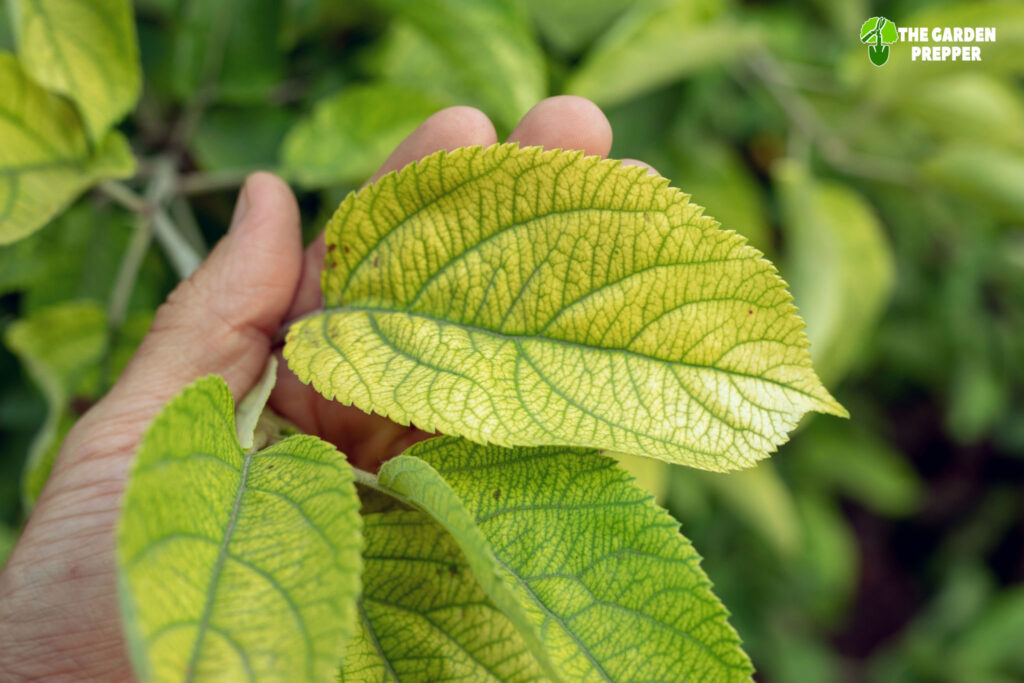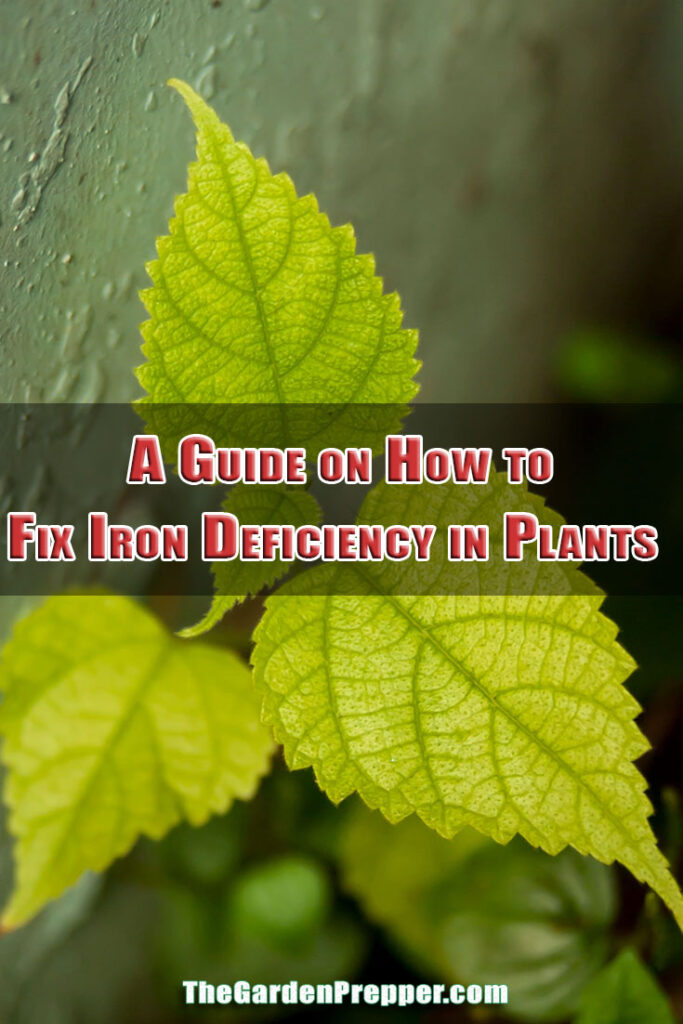Iron chlorosis refers to an iron deficiency in plants, which can feel very frustrating for gardeners. An iron deficiency would cause yellow leaves, among other symptoms, then eventually lead to death. Therefore, it’s crucial to know how to fix the iron deficiency in plants.
Read on as I show you what you need to know about iron deficiency in plants and how to stop it.

What is Iron Deficiency?
Iron chlorosis, or iron deficiency as mentioned, is the yellowing of plant leaves, affecting a lot of plants worldwide.
Iron is a nutrient not only humans need, but plants as well. This is required for them to function, as many of the plant’s vital functions, such as enzyme and chlorophyll production, development, metabolism, nitrogen-fixing, and more, are dependent on iron, among other nutrients.
Without enough iron, the plant won’t be able to function as well as expected.
The causes of this condition are a bit complex and not understood completely. Various reactions would influence iron availability, making the chemistry in the soil much more complex.
That said, iron chlorosis would usually occur in alkaline soils and contain lime. Even if there is a lot of iron in the soil, the higher pH levels would cause chemical reactions, making iron solid and unable to go to the plant roots. It may also happen to soil with too much clay or phosphorous, as well as overly wet or compact soil.
There are different symptoms of iron deficiency in plants, but the most obvious one is when the plant’s leaves turn yellow, though the veins remain green. Leaf chlorosis begins at the tips of new growth, working its way to the older leaves as the iron deficiency worsens.
Other signs include leaf loss and/or poor plant growth. If left untreated, it would eventually lead to its wilting and death.
How to Fix Iron Deficiency in Plants
Now that you’re more familiar with iron chlorosis, the next question is how to fix the iron deficiency in plants. Here are the tips and steps to follow:
1. Perform a Soil Test
Before anything else, you have to find out the main reason why it happens. This can be done through a soil test. Again, the problem may be caused not only by iron deficiency but poor soil quality. It may also be caused by alkaline soil or a mineral imbalance.
If the deficiency is caused by alkaline soil, you will need to correct the soil’s pH levels to improve the nutrient uptake. You can do this by applying fertilizer, but it is better to add organic matter like compost or peat moss, which are rich in minerals. You may also acidify soil by applying elemental sulfur to it during the summer season when the temperatures of your soil are high.
This is because the higher the pH levels, then the less soluble iron around to take in. The same goes for calcareous soil, which is chalky and rich in calcium and/or milestone, lacking other necessary nutrients.
If it comes from mineral imbalance, then the solution isn’t to only add more iron, but to correct that imbalance. The problem would usually occur in clay soils as the nutrients are scarce and there won’t be enough microbes or organic material to be absorbed well.
If ever the problem is compacted or overly wet soil, then this means the roots don’t have enough air to absorb enough iron for plants. You will have to improve the soil drainage if the soil is too wet. For overly compact soil, it’s tough to reverse this, so you’ll have to use chelated iron and apply it around the soil to increase the iron content.
2. Treat Your Plant
Once you have treated the soil and/or nutrient imbalance, then it’s time to treat the plant and apply liquid iron, either chelated iron or iron sulfate. This can be bought through a liquid form that is sprayed directly to the foliage.
It’s much better to spray your solution on plant foliage during cooler weather. If ever it is hot weather or summer season, then apply it during the evening to prevent burning any leaf tissue, as it’s sensitive and may easily damage.
Take note that this is only a quick fix that won’t have the long-term result, but this is a good step to take to nurse your plant back to health as you find and follow better solutions. This is because these sprays will only treat the leaves and not the plant roots, which is why it’s recommended to treat the soil as a long-term solution rather than to only treat the plant.
3. Treat the Soil
Afterward, investigate your soil quality and treat it, using powdered or granulated chelated iron. This is the optimum solution in terms of soil amendment.
Sprinkle the powdered iron around the plant’s root zone, following the package’s instructions. Also, take note that too much phosphorous can lead to iron deficiency as well, so make sure that the iron and fertilizers you choose are free from this nutrient.
It’s best to add iron supplements during the spring season and while the plant will start looking better within weeks, they’ll require care and the right amount of growth requirements throughout the next year to maintain good health.
Make sure that you invest in the right chelated iron, made for your soil’s pH levels, and to avoid spilling any of your iron supplements on the sidewalk or ground, as it stains. Also, remember that this process will take time, which is why you should use a spray to treat the leaves as the soil is enriched with an iron over time.
You can prevent iron deficiency by using sulfur when prepping your soil for potted plants and making sure that your soil offers good drainage.
Wrapping It Up
Iron deficiency is a serious condition in plants, but not to worry, as it is treatable as long as you are aware of the symptoms, causes, and correct solutions. By employing the right solutions, you’ll be able to get your plant back into health within weeks! Just make sure that you continue giving it the TLC and proper requirements for it to grow well throughout the next years to come.
I hope you learned a lot about iron deficiency in plants and how to fix it if it happens to you. If you notice that your plants show signs of an iron deficiency, follow these tips right away and fix the problem before it worsens. Good luck!
